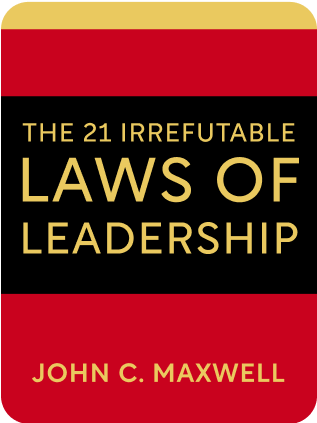

This article is an excerpt from the Shortform book guide to "The 21 Irrefutable Laws Of Leadership" by John C. Maxwell. Shortform has the world's best summaries and analyses of books you should be reading.
Like this article? Sign up for a free trial here .
What is the Law of Connection? Do you think leaders should keep emotional distance from their subordinates or is there room for engagement?
The Law of Connection is the tenth law in The 21 Irrefutable Laws of Leadership by John C. Maxwell. As the name suggests, the Law of Connection stresses the importance of emotional connection in leadership. Maxwell believes that orders and instructions can only go so far, and in order to lead effectively, leaders need to connect with their followers on an emotional level.
Keep reading to learn about the Law of Connection and how to put it to work for your business.
John C. Maxwell: The Law of Connection
Leading is more than just giving instructions and sending off your followers to execute them—leaders need to emotionally engage and connect with their followers. People won’t follow you until you move them with emotion.
Even when leading a group, you have to relate to people as individuals. Think of a baseball team as nine individual players instead of as a faceless team.
Here are some tips on how to apply the Law of Connection:
● Know yourself. Be your true self. Consider your personality, character strengths and weaknesses, assets, deficits, relatability, communication skills, and likeability. Knowing yourself will give you the confidence to connect with others.
● Communicate authentically. Be sincere.
○ For example, give specific, targeted praise rather than a “cookie-cutter compliment” such as “Great job.”
● Know your followers. Learn everyone’s name, story, and hopes for the future. It’ll be easier to connect with them if you know what they care about.
● Embody the characteristics you want to encourage (Law #13, lead by example). This gives you credibility.
● Knock down both physical and figurative barriers.
○ Physical barriers can be things like distance between you and your audience, height of a stage, and so on. Set up your communication station to get you as close to your audience as possible.
○ Figurative barriers are things like culture, lack of relatability, and so on. You, as the connector, need to adapt your communication style so that you’re reaching out to people in a way they’re comfortable and familiar with.
● Prioritize others, not yourself. You will connect faster when you focus on others.
● Have faith in people. Don’t talk to people because you think what you’re saying is important. Talk to people because you think they’re important. People are less interested in you than in what you can see in them.
● Offer hope. Hope suggests a future. People follow leaders because they want to get to a certain future.
Pitfall alert! Connecting is not the responsibility of followers, it is the responsibility of leaders. Don’t expect your followers to come to you. Initiate contact yourself. Use a technique called “walking through the crowd”—literally walk through a crowd and get to know people. Learn names, listen to people, relate to them. Make time when you’re available to others. The stronger your relationships with others, the more you will connect with them.
Like Law #5 (serve others), when you’ve successfully connected with your followers, they will work harder for you and be loyal.
Example of Successful Application of the Law: George W. Bush
Four days after 9/11, Bush went to visit Ground Zero. He talked to first responders and shook their hands. He thanked them for their work and listened to their stories. When he was speaking, the crowd shouted that they couldn’t hear him, and he responded, “I can hear you. The rest of the world hears you. And the people who knocked these buildings down will hear all of us soon.” Americans were angry, scared, and mourning. Seeing Bush in person, or hearing reports of his interactions with frontline workers, made people feel connected with and cared for.
Example of Failed Application of the Law: George W. Bush
Bush handled Hurricane Katrina very differently. He didn’t visit New Orleans. Instead, he flew over it in Air Force One. He didn’t meet anyone affected by the disaster in person. He didn’t address the people at all, even via another level of government. The mayor of New Orleans complained in press conferences that he wasn’t getting any help. The population felt that Bush was indifferent to their problems. Bush wasn’t indifferent. He contributed to the rebuilding process (by prompting Congress to give money) and the mayor of New Orleans eventually publicly thanked him. But because Bush didn’t directly connect with people, he broke this law.

———End of Preview———
Like what you just read? Read the rest of the world's best book summary and analysis of John C. Maxwell's "The 21 Irrefutable Laws Of Leadership" at Shortform .
Here's what you'll find in our full The 21 Irrefutable Laws Of Leadership summary :
- Why working with people is the only way to do meaningful work
- How to become the kind of person that can get things done
- Why you don't need to be good at all the laws of leadership to be a good leader






